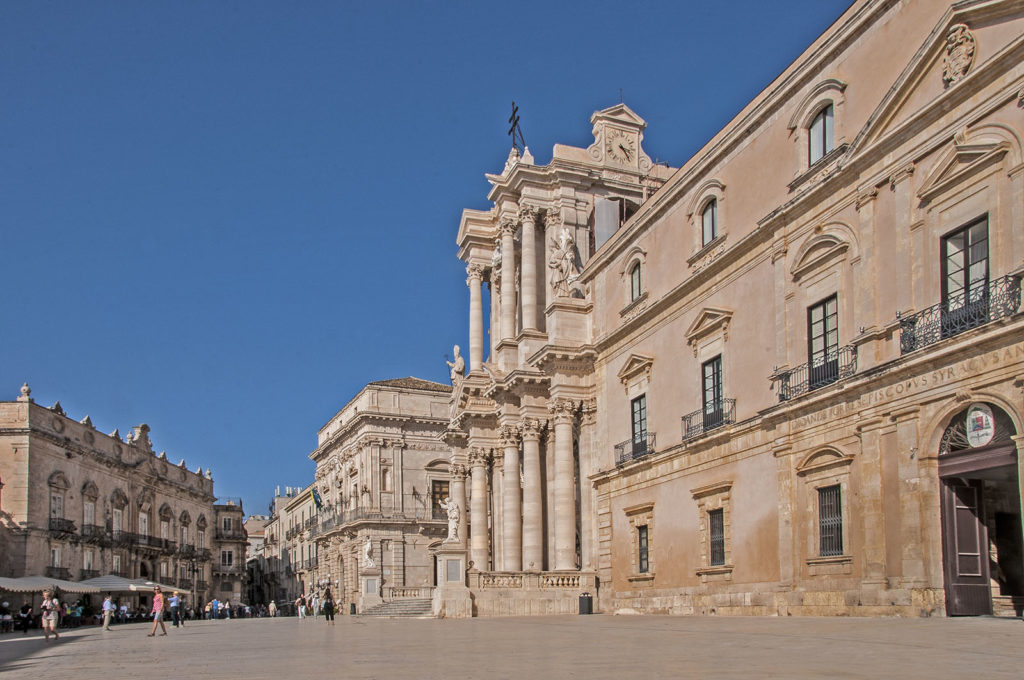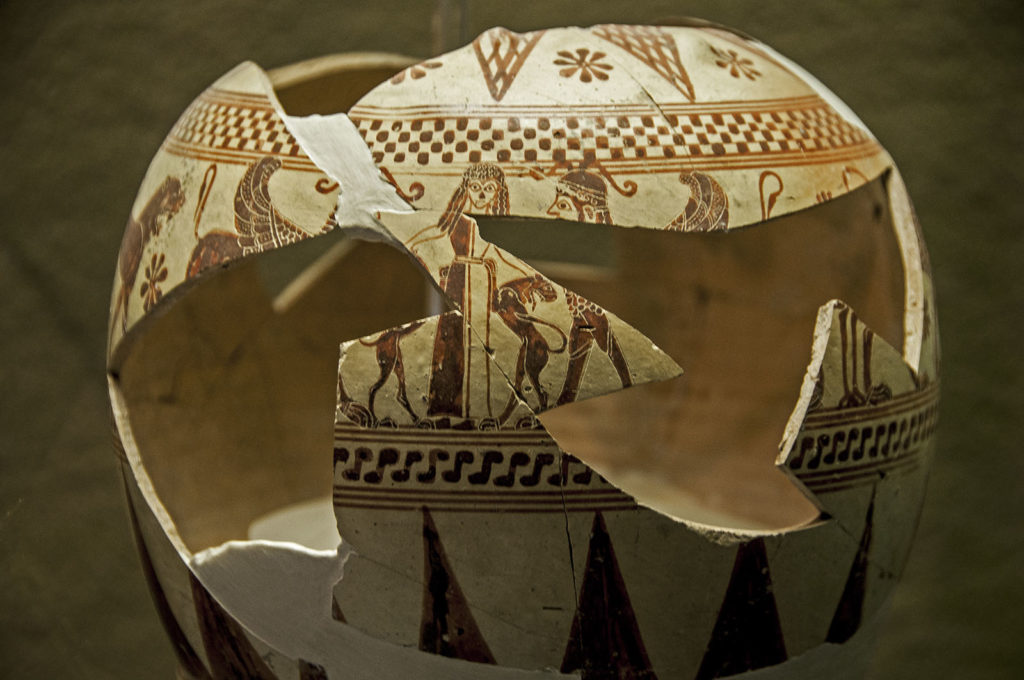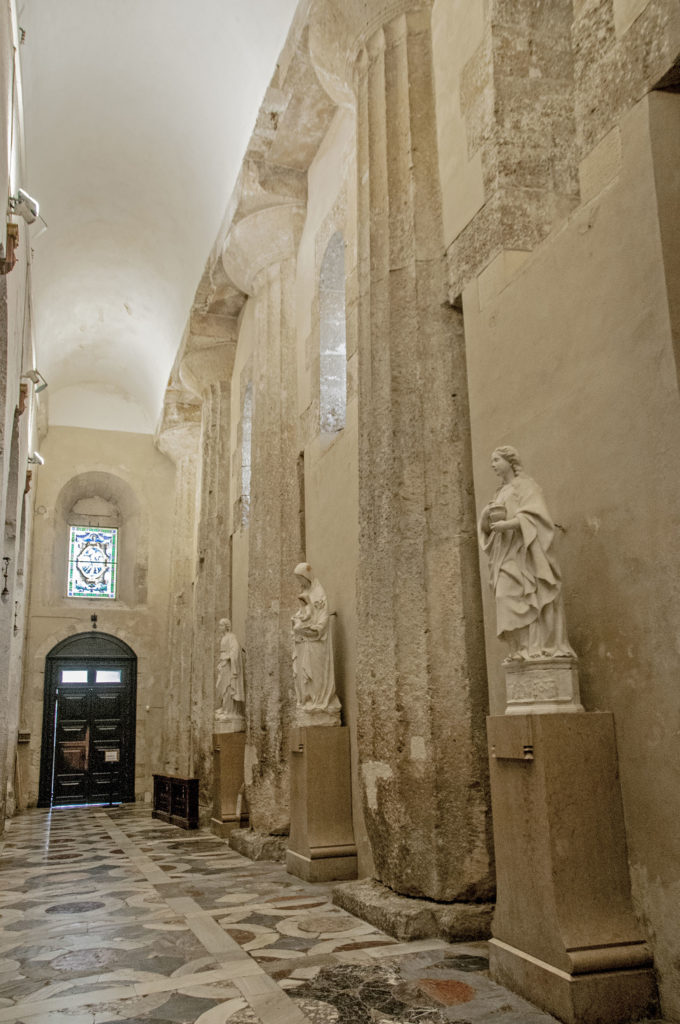With its “eye” shape, Piazza del Duomo is the most important area of the historic centre today. In fact, it houses two main buildings: the Cathedral and the Senatorial Palace.
 The earth element tells us the thousand-year-old history of this square through its buried treasures and thanks to the remaining traces of the ancient civilisations that inhabited it.
The earth element tells us the thousand-year-old history of this square through its buried treasures and thanks to the remaining traces of the ancient civilisations that inhabited it.
At the end of the 20th century, work was carried out to pave the square.
During the excavations interesting discoveries were made: traces of the Greek settlers who had inhabited the island of Ortygia were found just below the modern city.
Among the objects that archaeologists found underground were some fragments of a Greek vase with a very particular shape.
The Greeks called this vessel oinochoe, meaning “wine jug”. This artefact depicted the goddess
Artemis
together with some fantastic animals.
 In the days of the Greeks, the square looked very different.
In the days of the Greeks, the square looked very different.
It was rectangular in shape and characterised by the presence of two monumental temples: the first, in
Ionic
, style, was dedicated to the goddess Artemis and was in fact called Artemision; while the second,
Doric
, was dedicated to the goddess Athena and called Athenaion.
Some columns of the temple of Athena are still visible today in the Cathedral of Syracuse.
This church was in fact built many centuries later, on the remains of the ancient Greek temple.